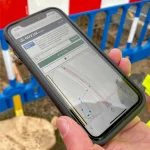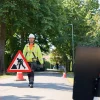Remote Rural Wales Village Cut-Off from Landlines by Overheated Exchange

Residents in the remote rural village of Penmachno, which sits in the isolated upland Machno valley area of North Wales (Conwy), have complained – via the local community council – that Openreach and BT recently left them unable to make or receive calls for several days due to a heat related fault that started on 19th June 2025.
According to the Community Council (Cyngor Cymuned Bro Machno), locals were said to have been left feeling “deeply concerned by … [the] telecommunications fault“, which they stated had impacted “all landlines” connected to the local Penmachno telephone exchange (PSTN).
Particular concern was also expressed by the council for older and vulnerable individuals, those who rely on landlines as their primary method of communication and had been left “isolated and unable to seek help in an emergency“. According to the council, there is also “no viable mobile phone coverage” in the centre of the village “from any network” to help fill in the communication gap (you can still get a weak signal outside this area).
Advertisement
On Monday morning the local authority stated that residents had already made multiple reports to BT and Openreach, but the fault still hadn’t been resolved and there was said to be “growing frustration” at the apparent “lack of urgency and coordination from BT … with no clear explanation or timeline for repair, the community is being left in the dark.”
Daniel Tomos, Clerk of Cyngor Cymuned Bro Machno, told ISPreview:
“This is a completely unacceptable situation. The inability to dial 999 puts lives at risk. Our community deserves better – this must be treated as a priority by BT and Openreach.”
To make matters worse, BT have previously removed every payphone from the village, although we assume this may have also been impacted by such an outage. But the good news is that the fault has now been fixed.
A Spokesperson for Openreach told ISPreview:
“We’re sorry for the outage to our copper network in Penmachno which affected customers’ landlines. This was due to recent high temperatures causing critical exchange equipment to overheat. We’re working with our partners to ensure our equipment is resilient against extreme weather conditions.
The outage was resolved on Monday afternoon and all customers should be back in service. If you’re still experiencing issues, please contact your service provider (the company that you pay your bill to). And if you are a vulnerable customer, please let your service provider know so that they can make a note on your account.”
Sadly, it’s not unusual for network repairs in remote rural areas to take much longer than urban ones, particularly due to complex issues of access and traffic management. Over the years we’ve seen examples where, in rare cases of extreme damage, rural areas have been left to wait for 6-12 weeks before repairs (here, here and here) – often due to delays caused by the need to get permits/permissions to conduct the necessary work. Sometimes power companies may also need to be involved, which can add another complication.
However, in this case the problem appears to have been inside the exchange itself (BT’s kit), which overheated during last week’s heatwave. Such events are extremely rare, although this being a remote rural exchange probably means that the equipment was housed in a very small building without air conditioning (some rural exchanges aren’t much bigger than a shed). Despite this, the recent temperatures would not usually have been high enough to cause such a failure.
Advertisement
The good news is that the government’s Shared Rural Network (SRN) project is due to start building a new mobile mast in the area this month, but of course that will take time to go live.
Mark is a professional technology writer, IT consultant and computer engineer from Dorset (England), he also founded ISPreview in 1999 and enjoys analysing the latest telecoms and broadband developments. Find me on X (Twitter), Mastodon, Facebook, BlueSky, Threads.net and Linkedin.
« Gov Asks UK Organisations to Donate Used Tech to Digitally Excluded Brits






















































The most likely issue is the fan failed
I’m not sure a payphone would have helped if PSTN services weren’t working.
Moving to Digital Voice would have though – and this case illustrates that. The PSTN is old and will increasingly fail in unexpected ways that can be hard to recover from.
Not to mention in 19 months (max) PSTN will cease to exist anyway. Hopefully the completion of the mobile mast will be completed ASAP.
I was surprised to always see the exchange near me with single pane windows wide open, didn’t seem very good for wind catching it and rain etc Doesn’t seem very professional.
I once asked why they don’t aircon all the exchanges, and an engineer said we have lots of exchanges so we can’t do that. My answer was, yes but you also have millions of customers and provide a critical resources. That would seem budgetable, esp with closing exchanges. I guess it involves spending money which they don’t want to do.
Given exchanges are now very electronic heavy, I wonder what the temperature in an exchange on a hot day is now. And how close the the rated limit of the equipment?
my understanding is that the PSTN equipment does not generate all that much heat itself and can be pretty tolerant of ambient temperatures usually experienced in this country, at least up until relatively recently.
Most of those millions of customers aren’t using that equipment anymore. The FTTC/FTTP networks go straight to nearby towns and cities and their larger climate controlled buildings. That is probably why there is reluctance to put any real money into the rural sheds as they will be axed as part of Openreach’s closure programme anyway.
It would be interesting to know if the local Openreach FTTx was affected. I suspect not. As someone else has already said, Digital Voice (and wifi calling on mobiles) would then be unaffected.
Typical operating ranges for telecoms kit is -40 °C to 65 °C. As a result, you don’t need air conditioning to keep the equipment cool enough in this country – you can cool it entirely with forced airflow from fans, as long as the equipment density isn’t too high.
By and large, aircon in exchanges is because the humans refuse to work in exchanges that are routinely above 30 °C, not because the equipment can’t handle it.
It’s not needed and is a big environmental cost. Most exchanges are passively cooled with racks designed to promote airflow, the ones that need some help are fresh air cooled or use adabiatic cooling.
Given that the switchover to digital switching completed in 1998, the need for aircon would have made itself known long before now.
This is ageing kit failing in new and exciting ways and is just reason to complete the closure as quickly as is possible.
Ahh the BT fan boys, who usually go to great lengths to say how BT design and kit is superior to anyone else, all rushing to the cause, panting out excuses it’s old kit.
Who’s fault is it old kit then eh? No doubt someone else of course lol
“Who’s fault is it old kit then eh? No doubt someone else of course lol”
BT wanted the PSTN shut down by now. They actually wanted it shut down by the early 2010s, but the voice part of 21CN never moved beyond trials. When they announced that they were not taking this forward, they pointed out the risk of the “bathtub curve” and that something will need to be done in the future.
Then they created Digital Voice for their own customers and told the rest of the industry that the BT’s part of the PSTN is going away and that they’ll need to build something similar to replace it by 2025. Government pressure and customer inaction (but plenty of whinging) meant it’s been pushed out to 2027 with yet more warnings about unreliability. Now here we are.
Of course the pressure and inaction continues and that’s why they are creating the PDPL product that will at least get these lines onto modern, supported equipment.
so, tl;dr, it isn’t totally BT’s fault.
@Adams
Well, if you can point to any manufacturer anywhere in the world making TDM telephone exchanges at PSTN scale in 2025 I’m sure BT would love to hear from you. Ericsson’s Last Time Buy on AXE10 was two decades ago. GPT no longer exists. It’s impossible to buy a new 5ESS or DMS100.
The PSTN was supposed to be shut by now. The last new local exchanges were installed in 1998. It’s not BT delaying this closure, though they have been very clear about the potential consequences.
Perhaps you could share your business plan that shows how spending hundreds of millions of pounds replacing a network you plan to turn off in less than two years adds up financially?
I’m not a BT employee or fan. I work for a rival. Your comment is bizarre. The network is old because bodies other than BT have delayed its closure.
And look at the mess of digital voice lol Had years to design and then go and tie it to the back of a router that is tied to an ISP.
Could have been done to an ont port instead as originally had a phone port. Instead a right mess if you want to use your own router. No doubt the BT fans will orgasm that the BT router is the best device on the planet and how we should suck it up and use it.
Yep, despite the BT fans wailing, was right first time. Lies at door of BT.
The voice from ONT port stopped being a thing because hardly anyone used it besides BT. CPs could pay Openreach charges alongside some of their own voice infrastructure or they could not pay Openreach and see to it entirely themselves. They chose the second option.
Openreach should be closing down exchanges by now for sure. Unfortunately this being the UK we both manage to slow it down ridiculously due to hand wringing while still managing to let down the people hands are wrung over.
For this is it: https://maps.app.goo.gl/cDbDesQjG6HmmTadA
Estimated year for closure 2040 alongside loads of others due to a resident’s care alarm being incompatible with VoIP, a Daily Nail story from an OAP charity about how fearful they are and hence politicians ensuring Openreach have to run the exchanges for a couple of residents each for a few years at the expense of everyone else.
The whole situation is beyond pathetic. There will always be issues, there will always be people making excuses as to why they need the legacy services. The country just needs to get on with it and deal with the issues quickly. It is ridiculous to expect there to be none even if this gets put back another decade.